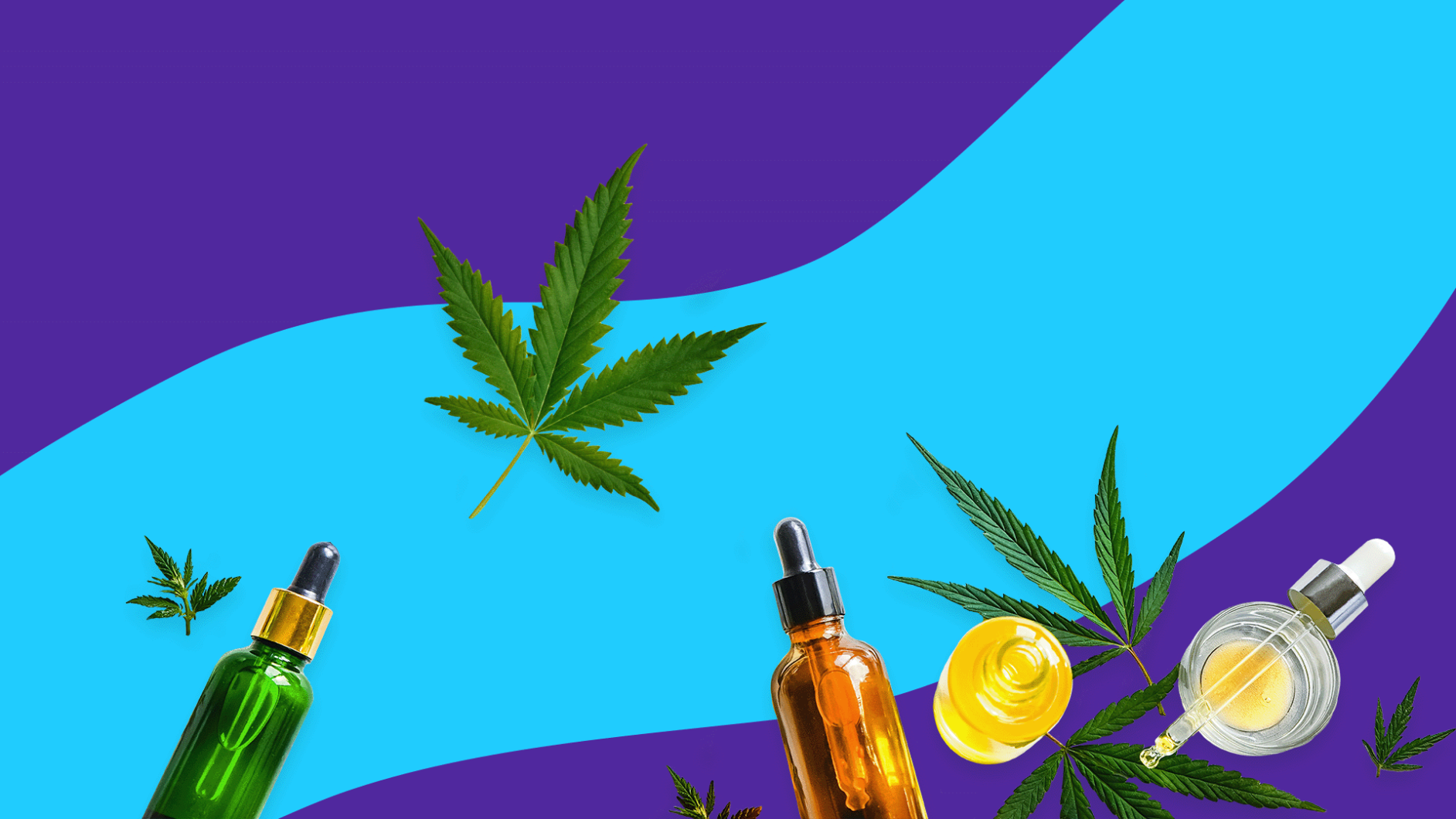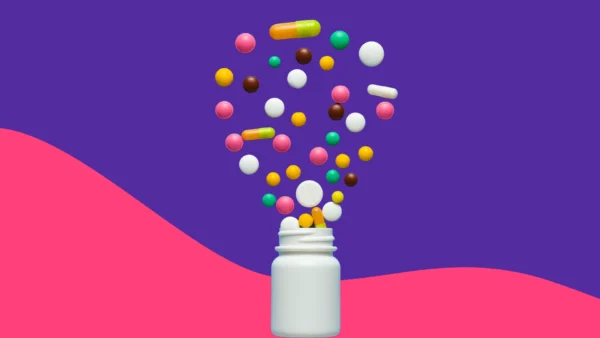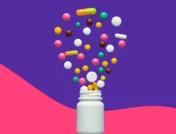An estimated 1 in 3 Americans have tried CBD at least once. As the most accessible healthcare professionals, pharmacists can play a crucial role in helping patients determine if a CBD or marijuana product may be safe for them. Whether it be in product selection, checking for drug-drug interactions, or patient education, a pharmacist can provide insightful knowledge to those considering using a marijuana or CBD-derived product.
This article will review what a pharmacist should know about marijuana and CBD and how to guide patients with questions about the difference, safety, and effectiveness of these products.
Understanding the difference between CBD vs. marijuana
Cannabinoids are compounds found in the cannabis plant, Cannabis sativa. Marijuana, also called cannabis, contains more than 100 cannabinoids. Delta-9-tetrahydrocannabinol (THC) is the cannabinoid responsible for producing the mind-altering effects or “high” associated with marijuana use. THC oils and concentrates are used in vaping devices, with higher amounts of THC correlating with more significant effects of marijuana.
Cannabidiol (CBD) is also a cannabinoid, but its consumption does not cause a “high.” The United States Congress legalized CBD derived from hemp in 2018 when the Agricultural Improvement Act was signed into law, removing hemp from the Federal Controlled Substances Act. Hemp is any part of the cannabis plant that contains no more than 0.3% THC, which correlates with lessened psychoactive effects.
CBD is known to interact with at least 65 receptors in the body. CBD works on vanilloid receptors, which are involved in pain, inflammation, body temperature, convulsions, psychosis, and many other functions and pathologies. CBD also affects serotonin and dopamine receptors, thus potentially impacting mood, anxiety, and blood pressure.
Legalities of CBD vs. marijuana
Extensive research demonstrates the potential benefits of marijuana for relieving symptoms of several diseases, including HIV/AIDS, cancer, glaucoma, and multiple sclerosis. As a result, many states have legalized marijuana for medical use.
As of March 2023, 21 states have fully legalized marijuana, 38 states have legalized marijuana for medical conditions, and seven states have allowed CBD only.
However, at the federal level, marijuana is still classified as a Schedule I controlled substance by the Drug Enforcement Agency (DEA). Schedule I substances are the most strictly regulated controlled substances due to their “high potential for abuse” and “no currently accepted medical use,” according to the DEA regulations.
You may have heard of hemp-derived CBD and cannabis-derived CBD. The main difference is their legal status: CBD is considered legal if it comes from hemp, according to the Agriculture Improvement Act in 2018. However, cannabis-derived CBD is still illegal in some states, including Idaho, Nebraska, and South Dakota.
Discussing CBD vs. marijuana with patients
Be clear in telling your patients that hemp-derived CBD will not produce a “high” like cannabis-derived CBD because it does not contain THC. Hemp-derived CBD can play a role in relaxation and has antioxidant and anti-inflammatory effects. When appropriately used, hemp-derived CBD is safe and can help manage co-morbid conditions like chronic pain refractory to other medications.
When counseling patients, ensure they are comfortable with the route of administration and dosing schedule. You should encourage the patient to keep a diary of how the product makes them feel. This can help determine when to titrate the dose or scale back on the frequency. Patients should take the lowest possible amount that provides adequate effects.
Efficacy data for CBD and THC
Since many CBD products may be combined with THC, limited medical evidence exists suggesting the efficacy of CBD alone in managing pain.
Further, not all CBD is the same. The main difference between hemp-derived CBD and cannabis-derived CBD is that hemp-derived CBD does not produce a “high” whereas cannabis-derived CBD, which contains more THC, does.
A 2019 study used hemp-derived CBD in patients taking opioids to manage their chronic pain. This study found that 53% of patients reduced or eliminated opioid use within eight weeks of initiating a hemp-CBD regimen. Also, 94% of patients in this study reported an improved quality of life while using hemp CBD to manage their chronic pain.
A small study in 2020 compared the use of hemp CBD, cannabis CBD containing THC, or a placebo in patients with fibromyalgia. The results suggested that THC caused a significant increase in pain threshold compared to placebo. Inhalation of THC in this study increased THC blood concentrations but decreased analgesic effects, indicating that one inhalation of THC does not provide an analgesic response. However, when THC was combined with CBD, THC blood levels were increased, resulting in a greater analgesic effect.
Moreover, a different study published in 2022 found that products with a high THC-to-CBD ratio were more effective at decreasing chronic pain than either agent alone, suggesting that THC can help in pain management by producing euphoria.
Counseling considerations for CBD
When counseling patients on CBD products, pharmacists are responsible for alerting patients about potential risks. This includes possible side effects and who should not use CBD/THC products.
Which patients should avoid CBD
Some contraindications to the use of CBD/THC products include a history of allergy to cannabis, schizophrenia, psychosis, pregnancy, lactation, heart attack, COPD, uncontrolled asthma, and kidney or liver impairment.
CBD side effects
Potential side effects of CBD include:
- Feeling less alert
- Drowsiness
- Gastrointestinal pain
- Diarrhea
- Agitation
- Irritability
Drug interactions
CBD inhibits several CYP enzymes and induces a few others. THC inhibits CYP3A4, an enzymatic pathway responsible for the metabolism of numerous medications, such as statins, antifungals, and glucocorticoids. By inhibiting CYP3A4, CBD/THC can increase patients’ exposure to these medications, increasing the risk of toxicity and adverse events.
Marijuana-derived prescription drugs
As a pharmacist, you might wonder how marijuana-derived prescription drugs differ from CBD and THC.
Epidiolex is a plant-based marijuana medication containing a purified form of CBD. The Food and Drug Administration (FDA) approved the drug to treat seizures associated with Lennox-Gastaut syndrome and Dravet syndrome.
Two other medications, dronabinol and nabilone, are synthetically produced to mimic THC. They are prescribed to increase appetite in patients receiving chemotherapy.
Bottom line
All cannabinoids are psychoactive to some extent, affecting the mind and potentially altering alertness, mood, and thoughts. The key difference between CBD and marijuana is this: Marijuana can be used for its euphoria-inducing effects, while CBD cannot. Hemp-derived CBD is legal and is often used with the intention of symptom relief associated with chronic pain, inflammation, epilepsy, and autoimmune disease.
By thoroughly reviewing medication records and medical history, pharmacists can provide recommendations for safely consuming CBD or marijuana products. Pharmacists can give critical education on how to safely consume and use CBD products and assist in product selection for optimal use.











